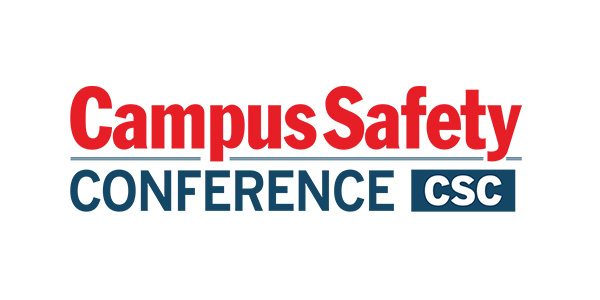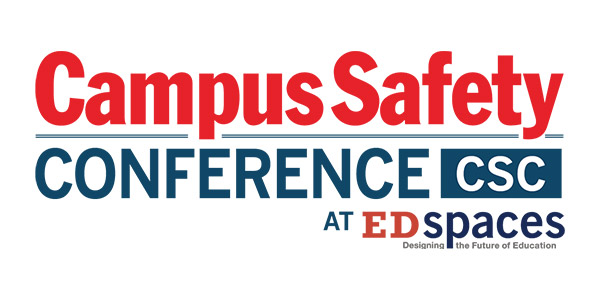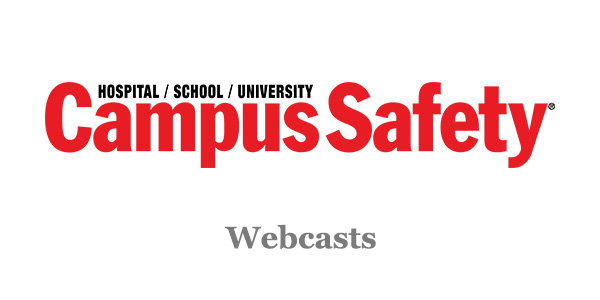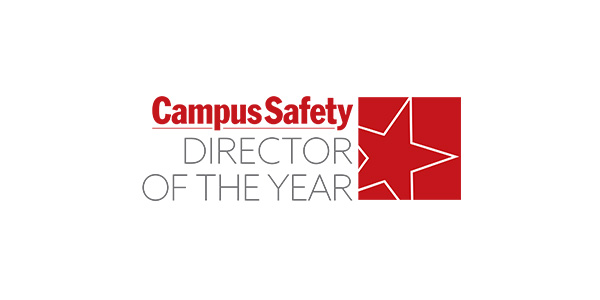Graduations are significant milestones that draw large crowds, making security a top priority for event organizers. These events bring together students, families, faculty and community members, which increases the importance of ensuring a well-organized and secure environment.
Proper security planning helps ensure a safe and smooth event, particularly considering potential threats such as active shooters, active assailant incidents, and crowd-related risks.
Preparing for Active Assailant Incidents
In recent years, several incidents have underscored the critical importance of comprehensive security planning for commencement ceremonies, particularly concerning active shooter and active assailant preparedness. These events highlight the necessity for meticulous preparation and collaboration with campus leadership, security professionals, and local law enforcement to help ensure the safety of all attendees.
RELATED: University of Cincinnati to Buy Security Barriers to Deter Vehicle Threats at Nippert Stadium
While the term “active shooter” is well-known, there is also the threat of “active assailant” attacks. Similar to active shooter incidents, active assailant attacks are unpredictable, evolve rapidly, and require immediate law enforcement or security intervention to mitigate casualties. These types of situations are attacks involving knives, vehicles, explosives, or a combination of weapons.
In 2022, within a span of 24 hours, three high school graduation ceremonies in Louisiana, Michigan, and Tennessee were marred by shootings. These tragic events resulted in injuries and fatalities, casting a somber shadow over what should have been festive occasions. Such incidents emphasize the need for rigorous security measures, including thorough risk assessments, staff response training, and close coordination with local law enforcement agencies.
RELATED: 8 Shot at 3 High School Graduations in 1 Day
A recent active assailant attack took place in December at an outdoor German Christmas market, leaving six dead and nearly 300 injured. An SUV was deliberately driven into the crowded market filled with men, women, and children shopping and enjoying the holiday festivities.
Conduct a Site Risk Assessment
The importance of conducting a thorough security risk assessment of a venue cannot be emphasized enough. Event organizers should work closely with law enforcement to develop an emergency response plan and identify secure entry and exit points. Site assessments should include potential vulnerabilities, such as open areas, weak access points, and locations where large groups may gather. Conducting simulated exercises and running security drills in advance can help improve response times and coordination in case of an actual emergency.
In 2019, a private university in central Texas conducted a full-scale active shooter drill in collaboration with local police, fire, and emergency medical teams. The exercise helped identify communication gaps and improved emergency response coordination. The drill enhanced situational awareness, reinforced quick decision-making and rapid response capabilities during an active shooter incident. It helped improve the effectiveness of the university’s emergency response protocols and communication systems, as well as the response capabilities of first responders and local medical facilities.
Enhance Event Security Through Firearm and Explosives Detection, Social Media Monitoring
Other critical security measures to consider are the use of firearm and explosives detection canine teams and social media monitoring. Canine teams can be used to help screen and increase attendee throughput at most campus venues and are currently in use at most colleges and universities via contract canine teams or partnering with local law enforcement.
Social media monitoring is another vital component of an event security plan by providing real-time intelligence to identify potential threats, manage crowd dynamics and ensure the safety of attendees. By actively tracking social media platforms, security teams can help detect suspicious activities, emerging risks or disruptions such as protests, and threats or unauthorized gatherings.
Training for an Active Shooter Incident
Staff and volunteers must receive continual training in active shooter response protocols, ensuring security personnel are equipped to address these incidents with the latest emergency response protocols and collaboration with current local law enforcement and their current emergency operations. Training programs should incorporate scenario-based exercises that teach situational awareness, evacuation strategies, and lockdown procedures.
In addition, onsite security personnel should stay on top of the latest active shooter response protocols to help ensure quick recognition of potential threats and act accordingly to prevent or mitigate dangerous situations.
Enhance Access Control and Establish Joint Command Center
Surveillance and controlled access operations play a critical role in helping mitigate risks. The use of metal detectors and bag checks at entry points enhances security. Technology solutions like surveillance systems and other monitoring systems help monitor crowd activity and detect suspicious behavior before escalating into a crisis.
The use of identification badges to restrict access to only authorized personnel strengthens security. Implementing a layered approach to access control, such as designated entry zones for attendees, staff, and dignitaries, can help limit the number of potential security breaches.
Establishing a joint command center is also critical to facilitate real-time communications, decision-making and coordination of on-the-ground operations. The command center team should include representatives from the event management team, local law enforcement, emergency services, facilities and private security. This central location enables officials and responders to quickly synchronize emergency response and disaster management efforts.
Remind Graduation Attendees of Security Protocols
It’s important the attendees at the event are aware of the security measures. Signage posted around the venue can help remind individuals of the security protocols and emergency procedures and evacuation routes in case an unexpected incident occurs. Schools and institutions should also provide pre-event materials to attendees, outlining security measures and expectations.
RELATED: CISA Releases New Venue Security Guidance
A mass notification system should be in place to communicate real-time alerts and designated safe zones with medical personnel on standby to provide immediate assistance, if needed. Coordination between security teams and first responders should be seamless to prevent confusion during an emergency, which helps reduce panic and ensure a smooth response to any situation.
Strengthening Preventive Measures
In 2024, universities faced significant security challenges during their commencement ceremonies due to interruptions by protestors. The disruptive demonstrations prompted the universities to increase security measures, which included the use of metal detectors and restrictions on items such as banners, flags, and large bags. These steps were taken to help ensure the safety of attendees and as well as help prevent potential further disruptions to the graduation events.
RELATED: Pomona College Graduation Moved Due to Protests
One East coast university was forced to cancel its university-wide commencement ceremony after weeks of disruptive and violent anti-Israel protests on campus. The decision was made to prioritize the safety of students, faculty and guests, highlighting the challenges institutions face in balancing free expression with security concerns during large events.
Graduation Venue Crowd Control
Managing venue layout and capacity is key to preventing congestion and ensuring a smooth flow of attendee traffic. Clear crowd flow patterns should be established, keeping aisles, exits, and emergency routes unobstructed to help prevent overcrowding and serious risks like trampling hazards and limited access for emergency responders.
Seating arrangements should also be planned strategically to minimize bottlenecks with ushers trained to effectively manage the movement of people within the venue. In addition, using signage and floor markings can guide attendees to their designated areas, reducing confusion and delays. For instance, at the 2023 Super Bowl, crowd control measures included designated entry and exit routes, assigned seating, and an increased security presence to help manage movement efficiently and with overcrowding.
With the use of barriers and signage, guiding attendees help ensure a smooth experience. Designating separate entrances and exits for different groups, such as graduates, family members, and faculty, can help manage crowd movement. Also, having security personnel stationed at key locations will help monitor the flow of attendees and help prevent unauthorized access to designated areas.
Even more important is the deployment of trained security officers throughout the venue, particularly in high-traffic areas and at entry points, not only to help manage crowd control but to also serve as a deterrent to individuals who may seek to disrupt the event.
Crowd Control Challenges Leading to Safety Incidents
Inadequate crowd control processes have the potential to lead to disastrous outcomes. At another prominent East coast university in 2024, the auditorium exceeded its capacity, requiring security personnel to close and lock additional entry doors. Frustrated attendees who were unable to enter banged on the glass doors, creating a chaotic situation that resulted in the university canceling the graduation ceremony.
RELATED: Mother Fatally Falls from Stadium at Ohio State Graduation
This highlights the importance of managing venue capacity and crowd flow as well as the necessity of clear communication with attendees regarding venue capacities and ensuring that effective and practiced crowd control strategies are in place.
Planning for Prevention
A well-structured security plan is essential to safeguarding graduation ceremonies of any size and at any venue and should include the integration of active shooter preparedness measures and effective crowd control strategies to create a secure environment for graduates, families, and staff.
By implementing rigorous security measures, leveraging technology, and fostering collaboration among all stakeholders, event organizers can help ensure that graduation ceremonies remain memorable and joyous occasions while prioritizing safety. Ongoing evaluation and adaptation of security protocols help strengthen preparedness efforts, along with implementation of proactive planning, rehearsal drills, continuous coordination with law enforcement, and public awareness all contribute to a safe and successful celebration.
Justin Kelley is Vice President, Enhanced Protection, for Allied Universal Enhanced Protection Services.
NOTE: The views expressed by guest bloggers and contributors are those of the authors and do not necessarily represent the views of, and should not be attributed to, Campus Safety.







